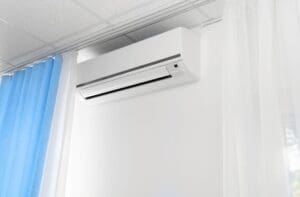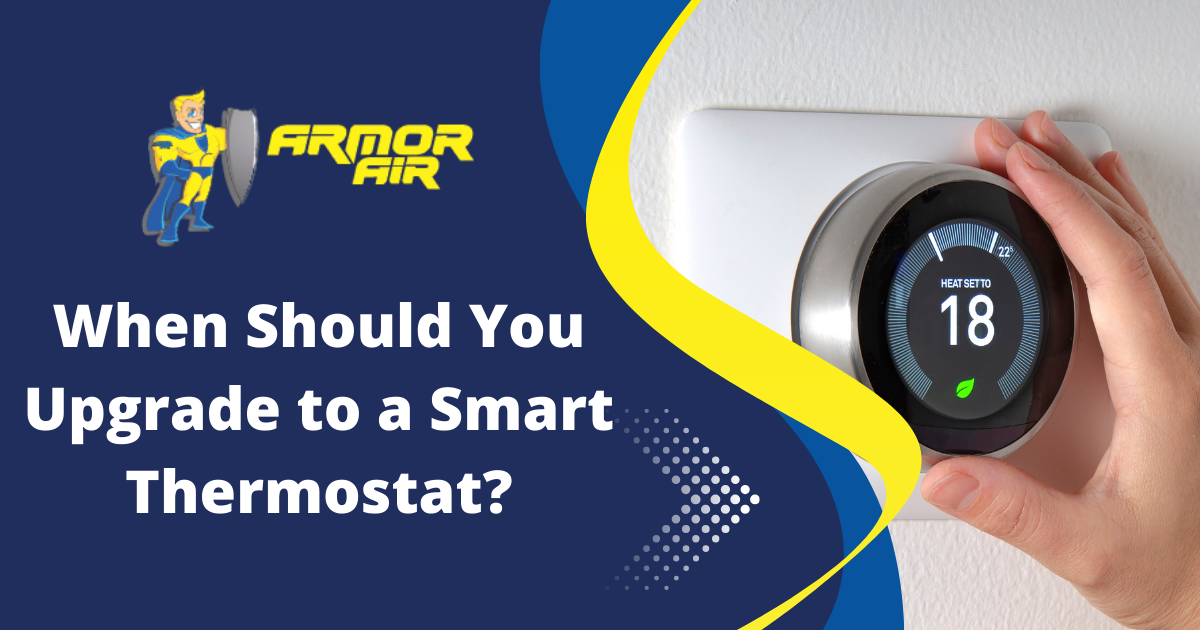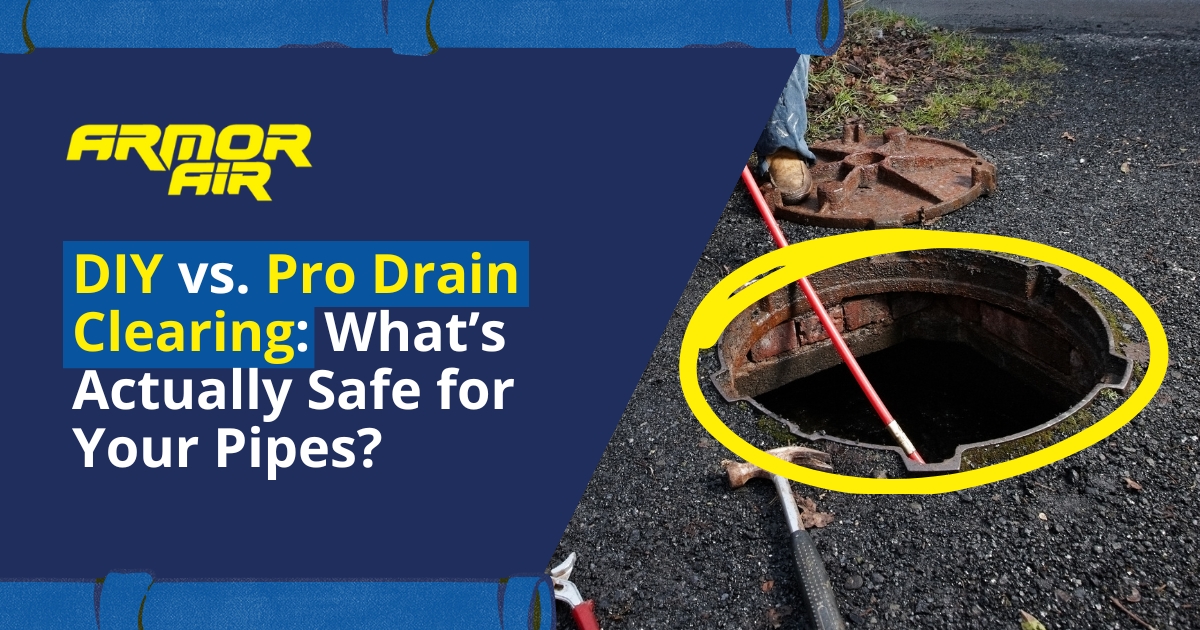Closed: Sun for God + Family time

The Truth About Ductless Mini-Splits: Do They Work for Entire Homes?
With average summer temperatures reaching well into the 80s, homeowners in Indianapolis, IN, need a reliable air conditioning system to stay cool. One of today’s most popular AC options is a ductless mini-split system. If you’re considering one of these high-efficiency units, you may wonder whether a ductless mini-split works for the whole house or just specific rooms. The experts at Armor Air are here to answer this question and more regarding ductless mini-splits, to help you decide if it’s the right choice for you.

What Are Ductless Mini-Split Systems?
Ductless mini-split systems are some of the most energy-efficient HVAC systems available on the market today. They consist of two main components: an indoor air handler and an outdoor compressor unit. Those two units are connected via a conduit that contains electrical wiring and refrigerant lines. When the system is on, it transfers heat between the indoor and outdoor units to both cool and heat your home, depending on the setting and season.
The system is installed and operates without the need for ductwork, making it a viable option for smaller homes, apartments, and older homes. Mini-splits are known as a zoned HVAC system, meaning that you can control the temperature in individual rooms to help you save on energy consumption and costs.
Can a Mini-Split System Cool or Heat an Entire House?
So, can a mini-split cool an entire house? The answer depends on the size and type of ductless mini-split installation you receive. Each indoor unit is designed to cool and heat the specific room that it’s in. If you want the mini-split to cool or heat your entire house, you’d need several indoor units all connected to one outdoor unit for the best results.
Only an experienced HVAC professional like the team members at Armor Air can determine which option is ideal if you need a ductless mini-split for the whole home.
Pros and Cons of Whole-Home Mini-Split Installation
Before you decide if this option is right for you, here are some mini-split pros and cons to consider.
Pros
- Energy efficient: Ductless heating and cooling systems are more energy efficient than most traditional HVAC systems since they’re able to heat and cool specific zones rather than the entire home at once.
- Zoning: One of the biggest benefits of ductless mini-split systems is that they offer zoned heating and cooling, allowing you to only use the system in specific rooms as needed to save even more on energy costs.
- Easy to install: Since they don’t require ductwork, mini-splits are much easier and faster to install than standard HVAC systems.
- Quiet operation: Mini-split systems are typically much quieter than central AC systems.
- Very few air leaks: Because there is no ductwork, mini-splits are much less vulnerable to air leaks, so they prevent excess energy loss.
Cons
- Higher upfront cost: While a single mini-split costs less to install than a traditional HVAC system, choosing this option to heat and cool your entire home will likely cost you more money out of pocket upfront.
- Not ideal for large spaces: Mini-splits may not be able to heat and cool larger rooms or larger homes effectively, especially those with inadequate insulation.
- Proper installation is key: If you choose a mini-split as your whole home cooling option of choice, proper sizing and placement are vital to make sure that everything runs smoothly and efficiently.
- Maintenance: You won’t need to worry about ductwork in terms of maintenance with a mini-split system, but they do require frequent air filter cleanings or changes to maintain good airflow and indoor air quality.
How Many Mini-Splits Would a Whole House Need?
If you’re wondering how many mini-splits I need for my house, the answer depends on a few factors:
- Room sizes: Larger, open-concept spaces may need more than one unit to work effectively, and smaller separated rooms will also need their indoor unit.
- Number of rooms: The more rooms your home has, the more units you’ll need, adding to the total upfront installation cost.
- Climate: Homes in very hot or cold climates may need more powerful mini-split units, or more units in total, to keep the home comfortable during extreme temperature changes.
- Insulation: If your home is properly insulated, you may not need as many units as you would if your home is not adequately insulated.
- Existing system: Having an existing HVAC system might reduce the need for a mini-split unit in certain rooms since you can supplement your heating and cooling with the central system as needed.

Energy Efficiency & Cost Considerations
According to the U.S. Department of Energy, ductless mini-split systems may save you up to 30% on your annual cooling costs. The absence of ductwork not only prevents air loss and saves energy, but it can also help you save on the installation cost, especially if there is no existing ductwork already in your home. Most new mini-split systems have high SEER ratings, and the zoned cooling capability gives you more control over when and where the system is in use.
In terms of cost, mini-splits do tend to cost more upfront to install than most traditional HVAC systems. However, you should see significant savings when it comes to your monthly utility bills over time, which should more than make up for that cost. Although they need frequent air filter changes, mini-splits still tend to require less maintenance since there’s no ductwork, which also helps you save.
Professional Sizing and Installation Matters
When choosing to install a ductless mini-split system for your whole house, it’s wise to get advice from an experienced professional. Trained HVAC technicians know how to choose the correct size and placement for your home. They’ll also make sure that everything is installed correctly for the best energy savings and optimum performance.
Contact Amor Air Today!
No ductwork, zoned heating and cooling, and excellent energy efficiency make mini-split systems a smart choice for many homeowners. The experts at Armor Air are available to help you decide which home comfort system is right for your Indianapolis, IN area home. If you’d like to book a ductless consultation, contact us today!
Recent News

Should You Replace Your Tank Water Heater with a Tankless System?

Top Benefits of Installing a Water Softener in Your Home

Do You Need Emergency AC Service or Can It Wait? How To Tell

How a Smart Thermostat Can Save You Money This Summer

How to Beat the Humidity: Dehumidifier Benefits in Indiana Homes

When Should You Upgrade To a Smart Thermostat?

